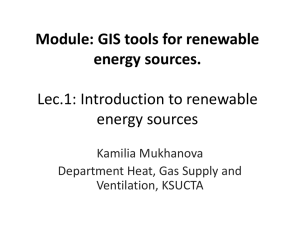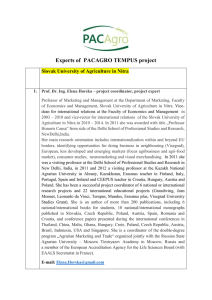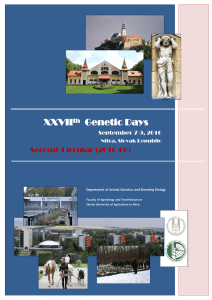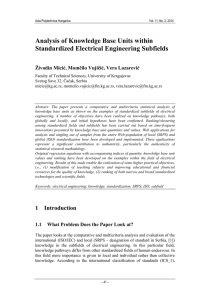Lectures and Projects
advertisement
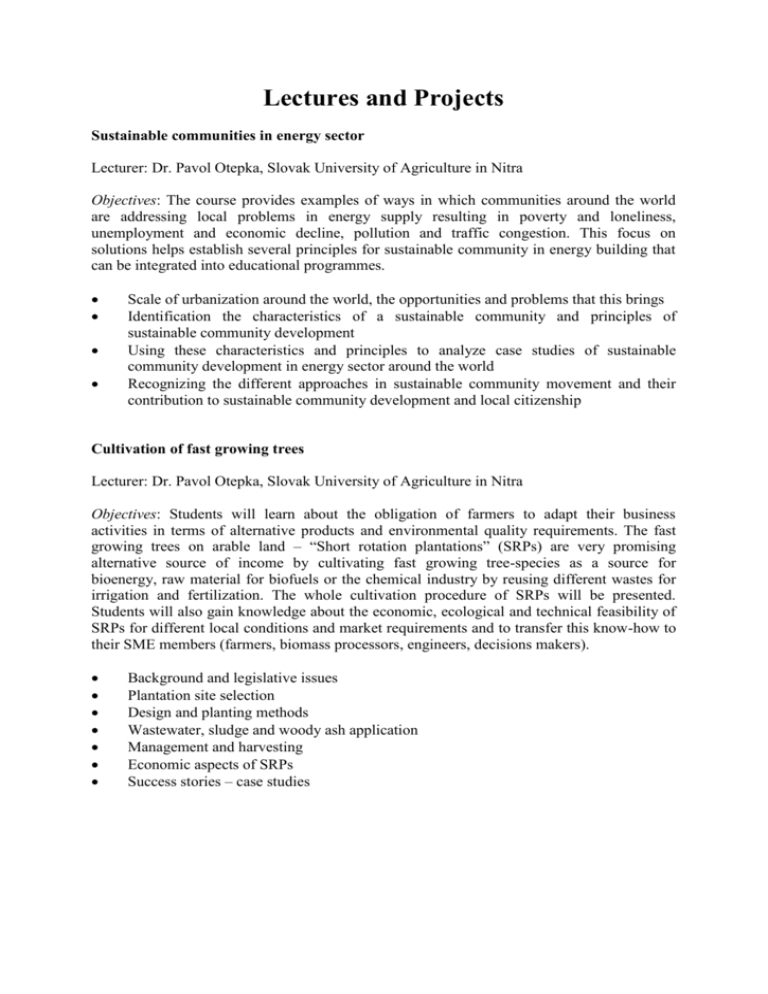
Lectures and Projects Sustainable communities in energy sector Lecturer: Dr. Pavol Otepka, Slovak University of Agriculture in Nitra Objectives: The course provides examples of ways in which communities around the world are addressing local problems in energy supply resulting in poverty and loneliness, unemployment and economic decline, pollution and traffic congestion. This focus on solutions helps establish several principles for sustainable community in energy building that can be integrated into educational programmes. Scale of urbanization around the world, the opportunities and problems that this brings Identification the characteristics of a sustainable community and principles of sustainable community development Using these characteristics and principles to analyze case studies of sustainable community development in energy sector around the world Recognizing the different approaches in sustainable community movement and their contribution to sustainable community development and local citizenship Cultivation of fast growing trees Lecturer: Dr. Pavol Otepka, Slovak University of Agriculture in Nitra Objectives: Students will learn about the obligation of farmers to adapt their business activities in terms of alternative products and environmental quality requirements. The fast growing trees on arable land – “Short rotation plantations” (SRPs) are very promising alternative source of income by cultivating fast growing tree-species as a source for bioenergy, raw material for biofuels or the chemical industry by reusing different wastes for irrigation and fertilization. The whole cultivation procedure of SRPs will be presented. Students will also gain knowledge about the economic, ecological and technical feasibility of SRPs for different local conditions and market requirements and to transfer this know-how to their SME members (farmers, biomass processors, engineers, decisions makers). Background and legislative issues Plantation site selection Design and planting methods Wastewater, sludge and woody ash application Management and harvesting Economic aspects of SRPs Success stories – case studies Geography of Renewable Energy Lecturer: Dr. Martin Hauptvogl, Slovak University of Agriculture in Nitra Objectives: Students learn to understand that energy production and consumption varies substantially in different regions and there is a great inequality in energy distribution in the world. The aim is to increase awareness of the growing share of renewable energy resources in the local, regional and global scale. Students learn to recognise natural conditions of individual regions and their feasibility for the energy production based on different types of renewable energy sources. Different regions of the world need to cope with different types of resources. Relationship between energy consumption and economic development in the world Global distribution of energy production and consumption Environmental impacts of the energy production and consumption in different regions Increasing efforts of the countries to become energy independent using locally accessible renewable energy sources Case studies of implementation of renewable energy sources in different regions Applying GIS in Renewable Energy Lecturer: Dr. Martin Hauptvogl, Slovak University of Agriculture in Nitra Objectives: The aim of the course is to show students the importance of GIS technology in the process of the great efforts to capture and cultivate renewable sources. GIS improves the way of energy production and consumption. It organizes geographic data and thus unable us to select useful information and use the data for a specific project. The students understand the importance of having proper and accurate information in order to make good decisions in the process of a project planning. The course focuses on determining locations suitable for different types of renewable energy sources. Introduction to Geographical Information Systems Case studies of applying GIS in production of renewable energy Using GIS software to determine the most favourable locations for wind farms in a region Localization of suitable areas for the establishment of biomass plantations and examine the economic feasibility of biomass supply to energy producing facilities based on transportation distance Using GIS tools to calculate the solar energy potential of building rooftops Mapping potential locations suitable for hydro plants Locating areas suitable for the energy production based on biogas




